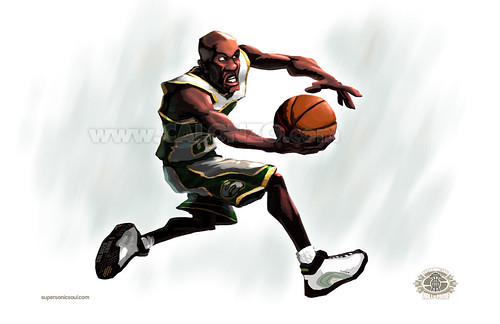Deadspin reprinted a great Esquire article from 1992 by E. Jean Carroll about basketball groupies in the post-Magic NBA. There are some interesting/embarrassing stories about many old-school players, including the Seattle Supersonics' own "Big Smooth" Sam Perkins:
Miss Diana Mendoza is going to Tone Loc's record company tonight, so she has to buy a new bustier, but she has time to whip by in the Jetta Eddie Murphy bought her and meet me at the Source on Sunset Boulevard for a sandwich. Miss Mendoza is Austrian, Spanish, Native American, and Moroccan and has been an extra in a couple of movies. She has hung out at Magic's house with Miss Power and says that she "loves Earvin," but the one person she always wanted to meet was Sam Perkins. "Sam was like everything," Miss Mendoza had told me and now tells me again. "Magic had a party at the Palladium and all the ballplayers were there, and I told Robin there's only one NBA player I want to meet, and she said who, and I said Sam Perkins. And she introduced me! And I said when I met him, 'I rooted for you!' And we've been liking each other ever since. We had a date, but"—her bosom rises and falls with dejection—"we've never gotten together."Awwww. But they are not as complimentary about another former Sonic:
Olden Polynice drives in for a stunning, almost indigestible, slam dunk.(cue sad trombone)Read the whole story here.
"The ugliest player in the NBA," agree the young ladies, dipping into the jalapeños.




